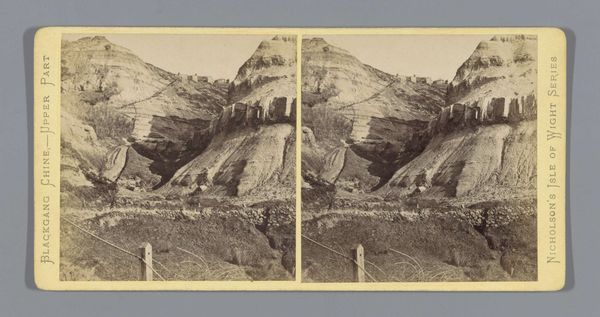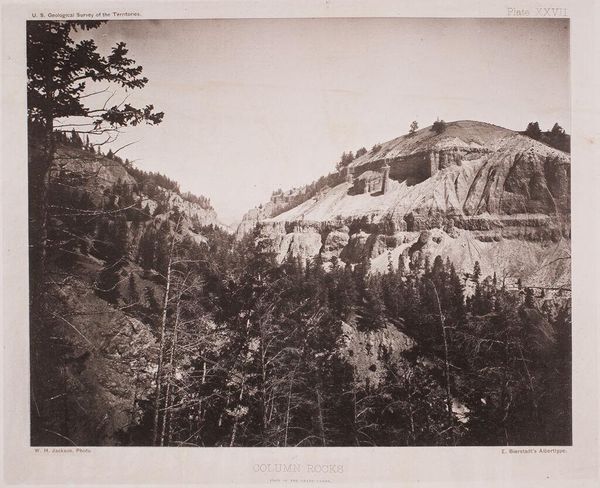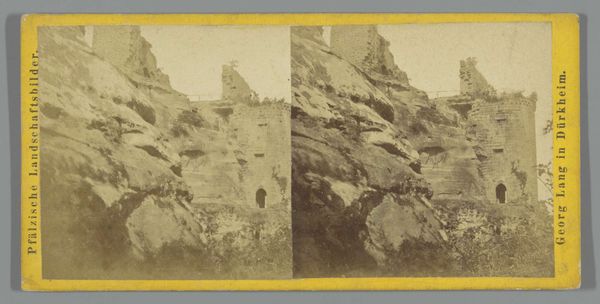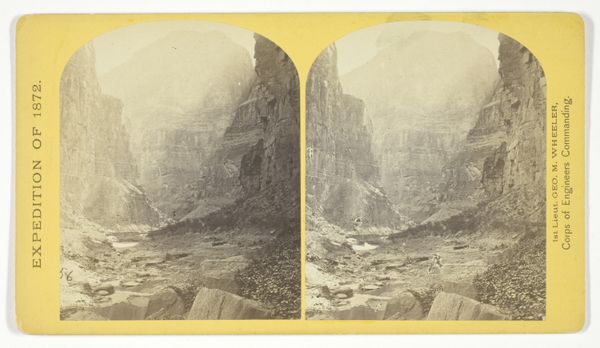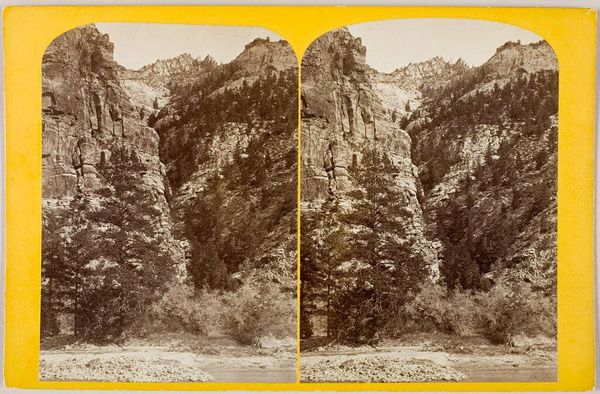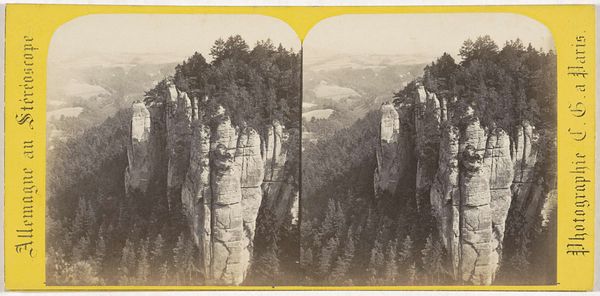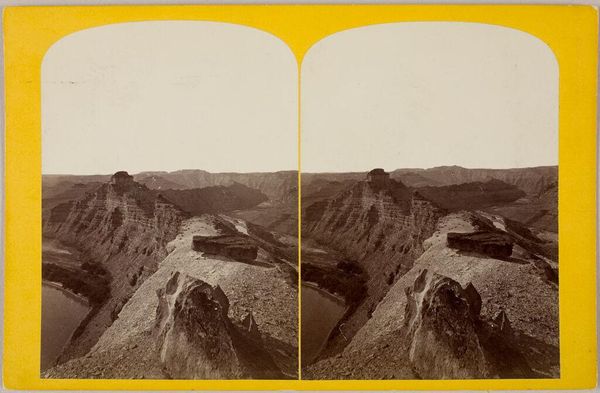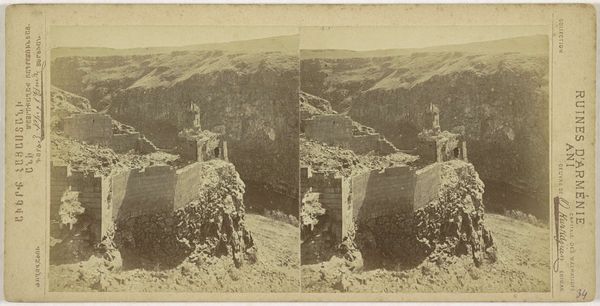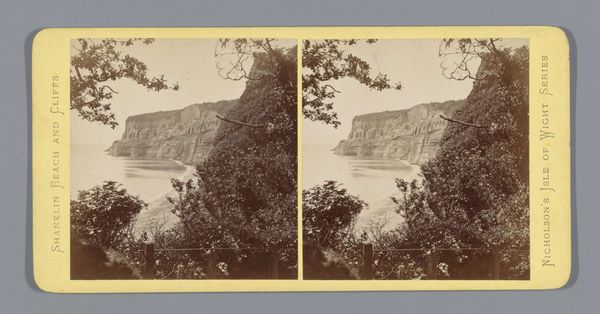
print, photography
# print
#
landscape
#
photography
Dimensions: 9.3 × 7.6 cm (each image); 10 × 17.8 cm (card)
Copyright: Public Domain
Curator: Here we have William Henry Jackson's "Basaltic Cañon, Foot of Tower Creek," a photograph taken sometime between 1879 and 1892. It’s currently part of the Art Institute of Chicago's collection. Editor: It's stark, almost severe. The tonal range feels quite narrow, focused on variations within gray and brown. It gives me a sense of immensity, and that monolithic rock formation… forbidding, maybe? Curator: Jackson was quite strategic in using photography to shape public perception of the American West. Images like this one directly influenced the establishment of Yellowstone National Park. It’s about documenting and promoting an ideal. Editor: But consider the industrial angle. Jackson’s operation in Denver, churning out stereographs… it’s a visual mass production, packaging the wilderness for consumption. Think about the resources consumed: chemicals, paper, labor... Curator: Indeed. And his photographs found a ready market. Tourists bought them as souvenirs. Government used them for reports. They were tools to codify this land. Editor: Looking closer at the image, the basalt itself tells a story. It was molten once, volcanic. Then shaped by erosion. Now it's a commodity to be captured, reproduced and sold. Jackson's artistry transforms natural processes into exchange value. Curator: I see it more as participation in a broader cultural narrative. Manifest Destiny justified westward expansion and was reflected in images by Bierstadt and Moran, but also found its expression in photographic documentation of a land seen as available. Editor: The social implications were often elided by the beauty and scale of these vistas, but were deeply material. And these stereographs, unlike singular paintings, democratized the viewing of nature in ways never done before. Curator: A fascinating dialogue between accessibility and exploitation. Editor: A reminder that landscape photography, like any art form, has a complex relationship with labor, industry, and even power structures.
Comments
No comments
Be the first to comment and join the conversation on the ultimate creative platform.
